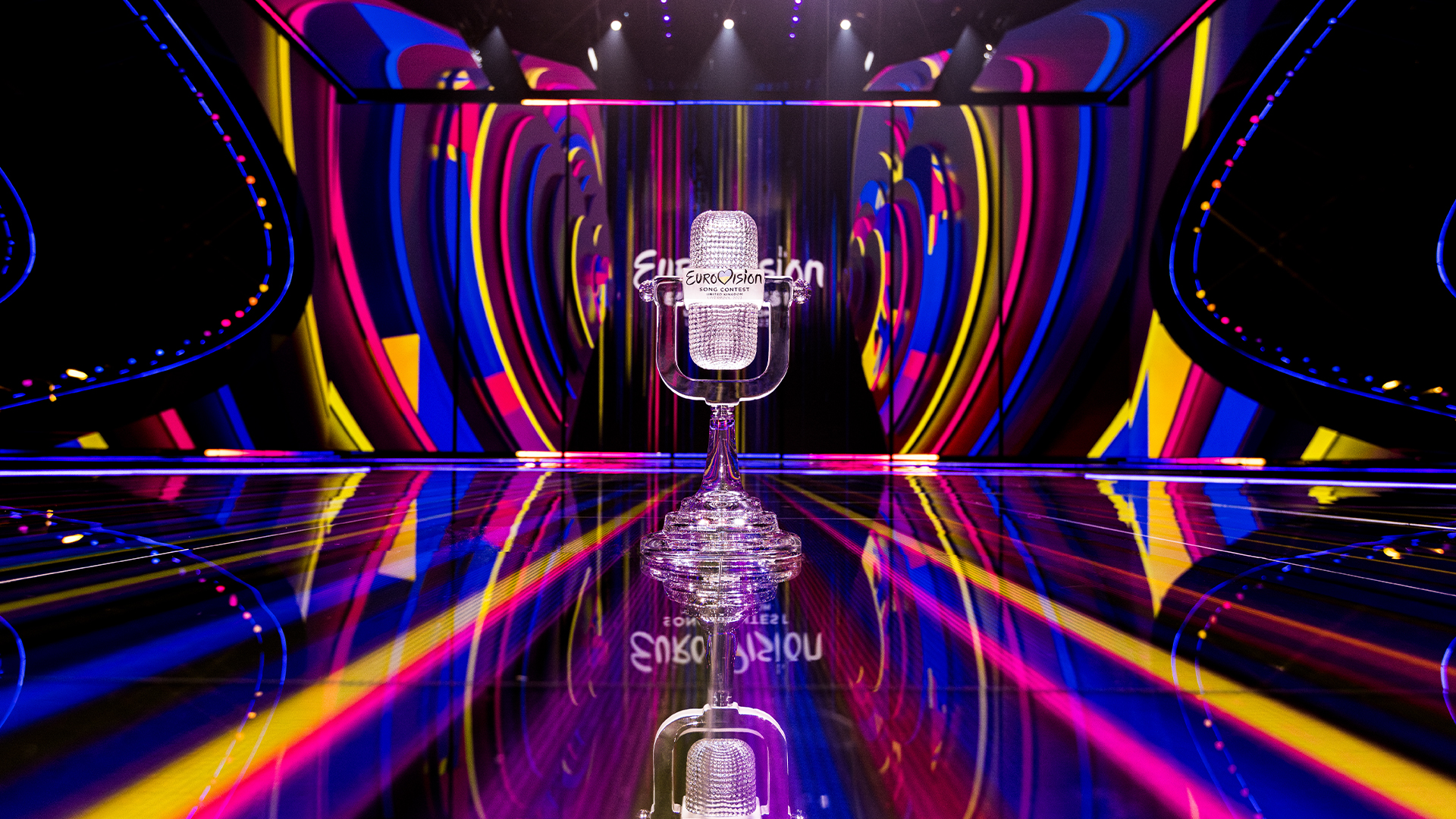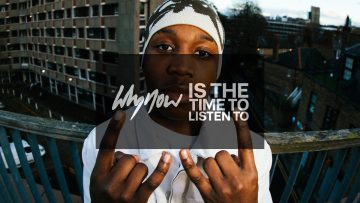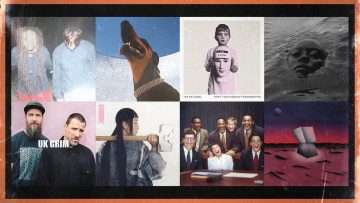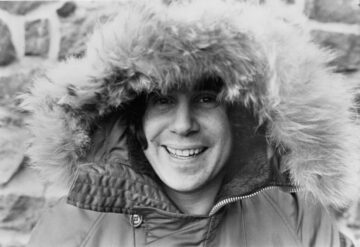In a nutshell, the Eurovision Song Contest is a visual metaphor for expecting the unexpected. One moment, viewers might be entranced in a soft power ballad, powerfully sung by a Nordic country; the next, Ukraine is dancing in a silver coat and headpiece to a chaotic pop number that makes no sense at all.
The fact Eurovision can showcase so many facets of European culture is one of the reasons we love it so much – even despite the fact the U.K. have performed pretty poorly up until Sam Ryder’s second-place finish last year. Putting on one of the biggest shows in the world is a mammoth task, and what happens behind the scenes is a world all on its own. The Eurovision bubble starts months in advance for the acts, but the integral crew are onboard for the best part of a year.
With the U.K. stepping in to host for a war-torn Ukraine, the challenge to produce a memorable spectacle is unlike any other year. Leading the charge for the BBC’s output is stage designer Julio Himide and lighting designer Tim Routledge. Having worked on projects that includes the GRAMMYs, the MTV VMAs, and various world tours, (Routledge was even behind Stormzy’s lauded 2019 Glastonbury headline set), a show of this scale seems like a walk in the park – when, in fact, it is anything but.
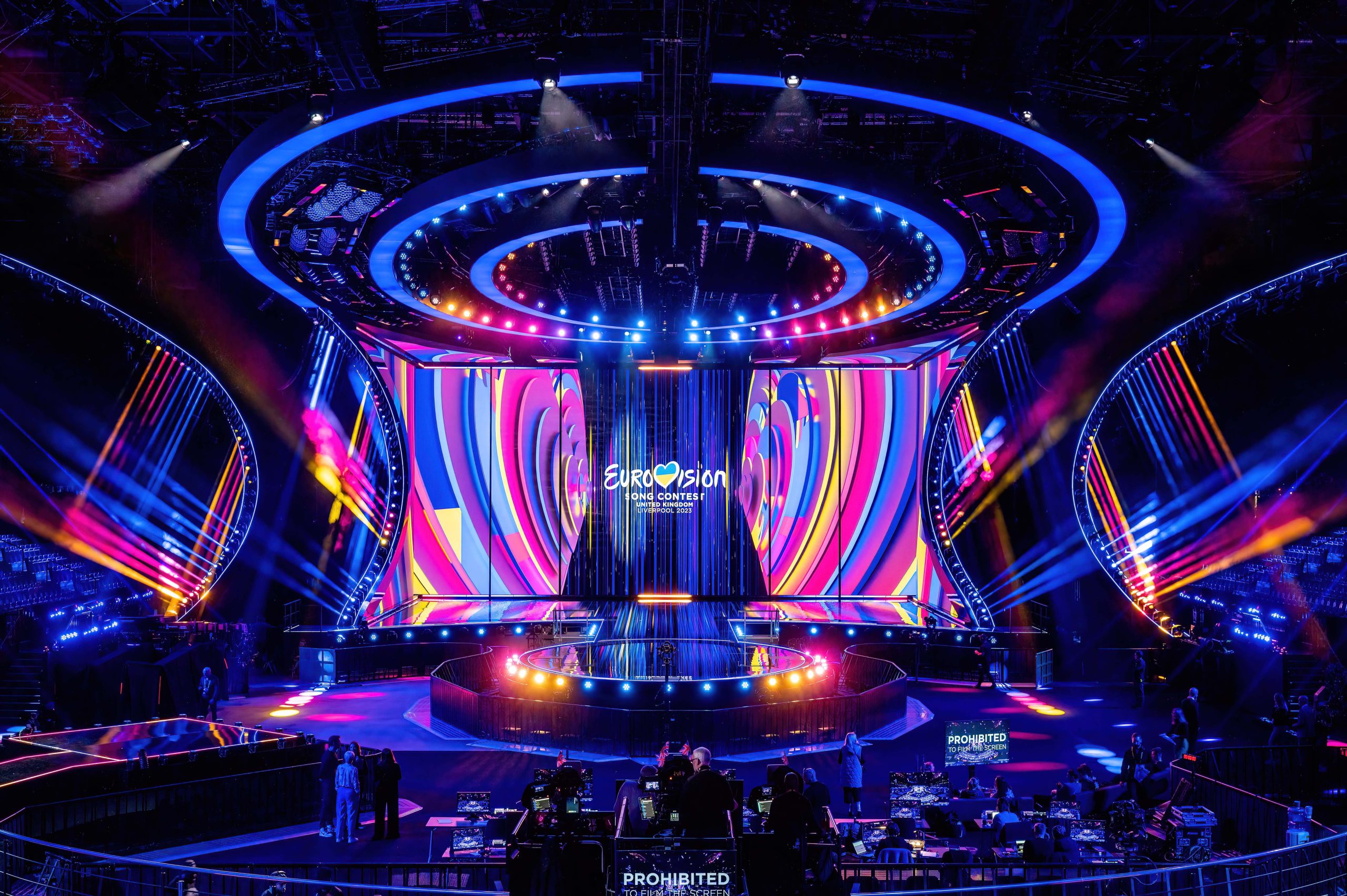
When the call comes to you – “Tim, Julio: Eurovision 2023…” – is it an immediate yes?
Tim Routledge: This is the show since I was six years old that I’ve wanted to do. This is a dream job. I’ve worked on tours for Beyoncé, Sam Smith, Spice Girls… I’ve had dream jobs, but of all the jobs, this combines my love of music and broadcast. So mixing the two together in the biggest TV show in the world is a dream. Everyone in my team wanted to be involved. It was a no-brainer.
This year is the first time that we have two countries hosting side-by-side. There are two cultures to bring together. How have you gone about that?
Julio Himide: I think between Tim and his department, and myself in our department, we have got a lot of influence from Ukraine that blends with the U.K. We have a lot of team members in the entire crew that are working hand-in-hand in that way.
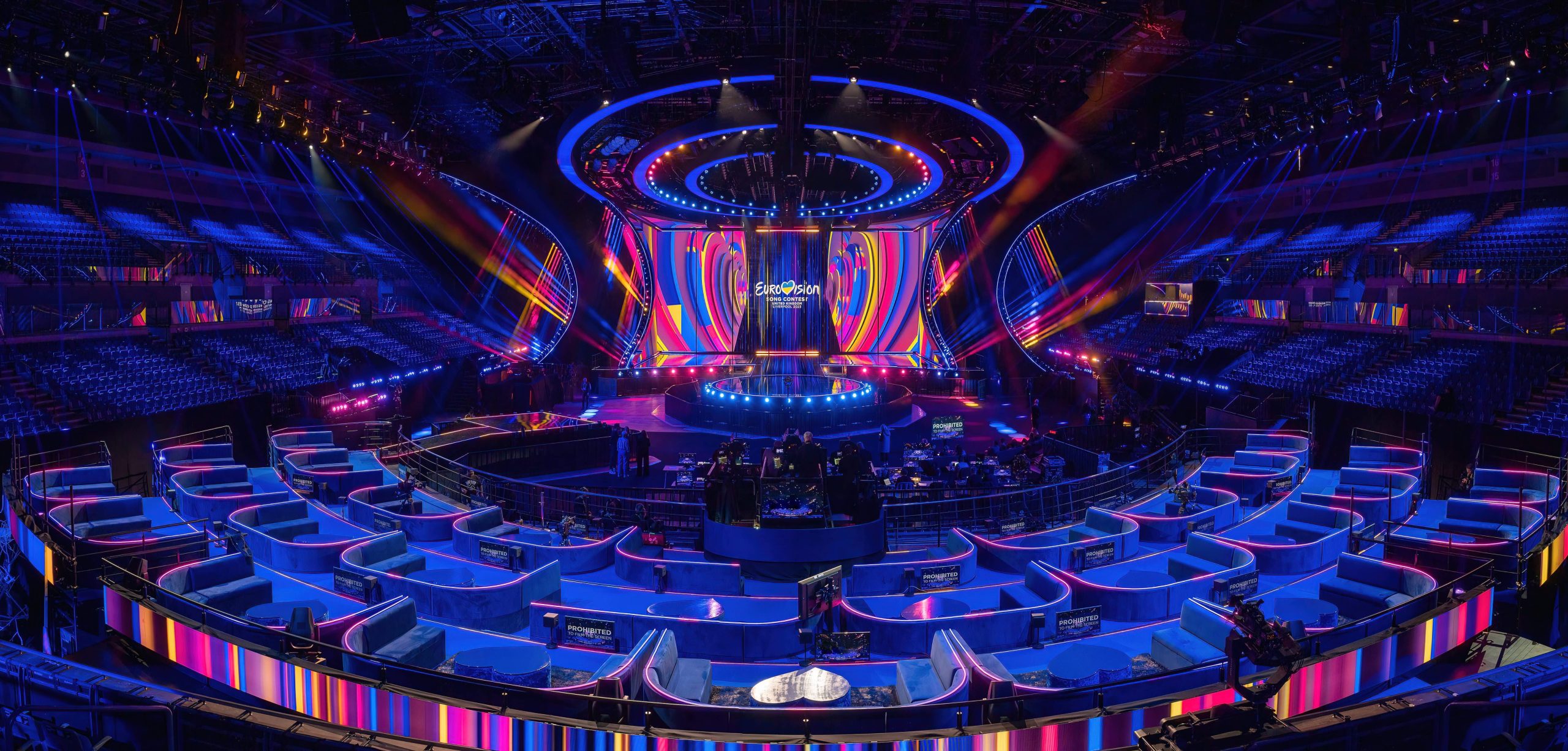
TR: The number one thing from the BBC was integration. We’re hosting this on behalf of them. It’s technically their show. We found an amazing Associate Lighting Designer called from Ukraine, who would normally be lighting The Voice or Dancing With The Stars Ukraine. Across all departments, there’s a whole gamut of specialist people. There’s the most wonderful and emotional Ukrainian performance [in the first semi-final] that’s off-the-chart beautiful, clever and tells a story of the person performing it – who is a major pop star in Ukraine – and how the war has affected them. It’s sensational.
READ MORE: ‘Everything we do is about elevating the music’ | How to build a Loyle Carner show
Walk us through what the viewers are going to see. Are there any small details that we might overlook in the excitement?
JH: Well, first and foremost, we are seeing a lot of cultures from both countries coming together. Throughout the three live shows, you will see the cultural identities of these countries, so that’s super exciting. You will also see some past Eurovision winners reunited on our stage.
TR: In every aspect you’re seeing – including the postcards VTs [pre-recorded videos introducing the acts], which is an important part of Eurovision – you’ll see integration. We have some tricks left over that are not available to the delegations that Julio has built within the set that we’ve been cleverly hiding.
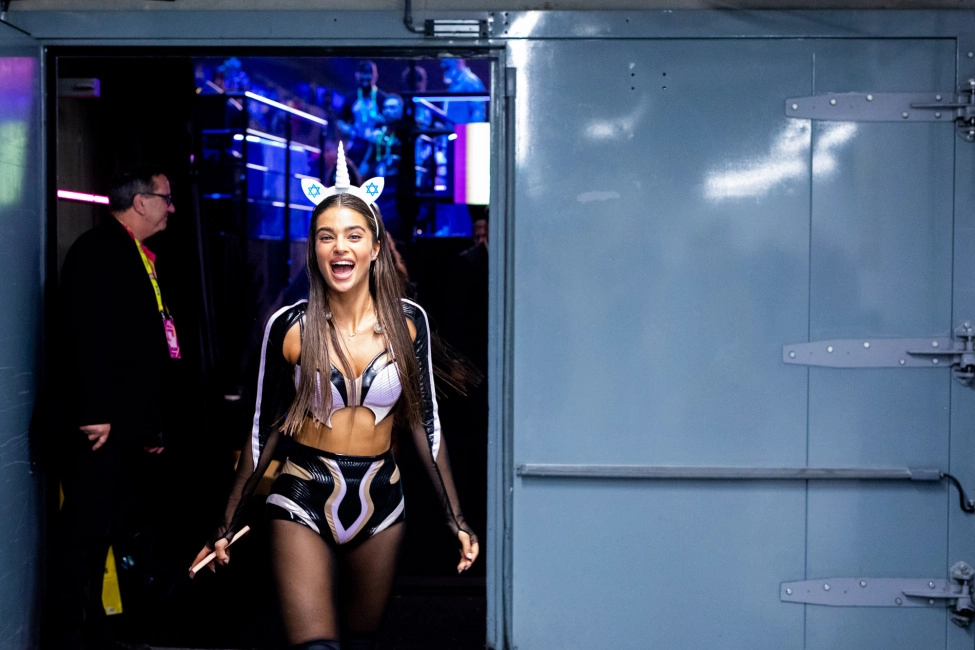
Photo: Chloe Hashemi
The whole show is designed around integration between myself and Julio, in that the show has to transform continuously for 37 delegations and then eight or nine interval performances. So between us, we’re trying to create an insane number of looks so it doesn’t feel the same for the whole night. There’ll be constantly transforming stages.
The thing that people at home won’t see, but is the most fascinating part of Eurovision, is the changeovers. You’ve got 50 seconds exactly to get the previous entrants, their set, and extra lighting, props, and costumes offstage.
READ MORE: ‘There’s no limit to what direction we can take’ | How Yungblud’s shows are created
JH: It’s an impressive operation. I wish the audience could see it because it is as exciting as watching some of the acts. I think the acts every year are of a better and better quality and the calibre of performances are very impressive. That makes exciting television.
TR: I think we’re also nervous because we’re looking at these performances and don’t know who’s going to be in the final. We’ve got all these amazing creatives and you’re thinking about who might make the final and which performances might get seen. The excitement for us is really in how we piece together the final show on Saturday. Once we know who’s in the final it gets even harder, because of planning what comes on and off. There’s a 1AM meeting on Friday morning to work out the running order of Saturday’s show.
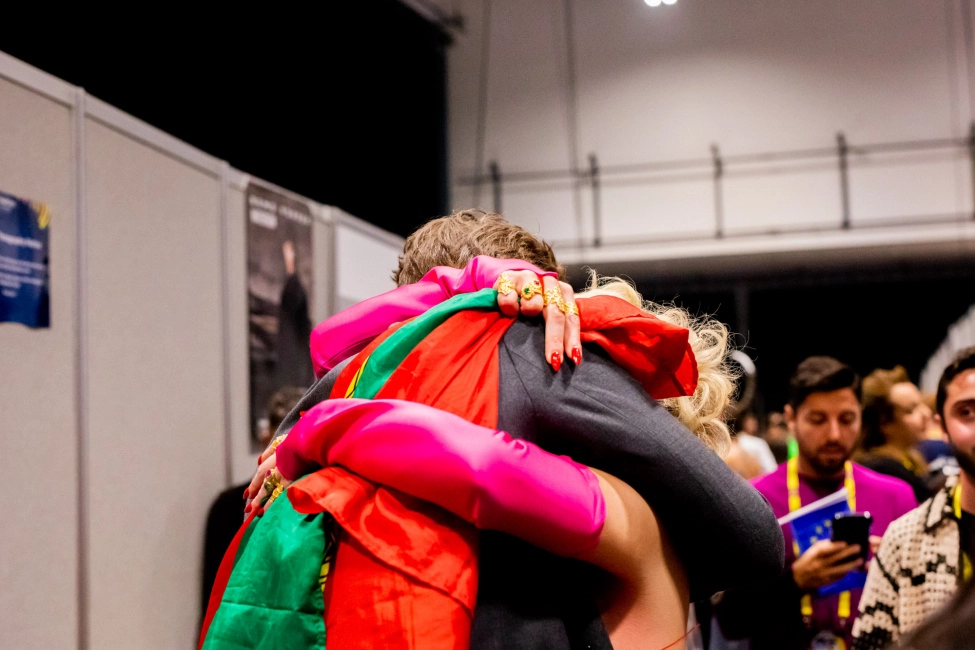
Photo: Chloe Hashemi
Speaking of the calibre of performance improving over the years, sometimes when we tune into Eurovision, there’s such an expectation to be wowed. Do you feel the pressure of 160 million eyeballs waiting for that “wow” moment?
TR: I think you have to remember there are 37 delegations. Julio and I have created the show visually, but it’s not ours. It’s the sum of all of the delegations, and their nerves are high. They want their performance to be the best, so we have to be on-point for them to deliver what they need.
JH: As Tim was saying, there are a lot of great surprises and a lot of great production values that keep the show looking very different from act to act. That’s a wonderful thing. There’s also a lot of variety in the performance from all the different countries. It’s very diverse in that way. I think the “wow” factor comes automatically, and I think we as the production team just helped to elevate it to another level.
We also have a great team of professionals from all around the world, from lighting to content companies. We have a content company from Ukraine, which is creating all these great visuals that get played on the surface of our stage, because 90% of it is made up of video, from the ceiling to the floor.
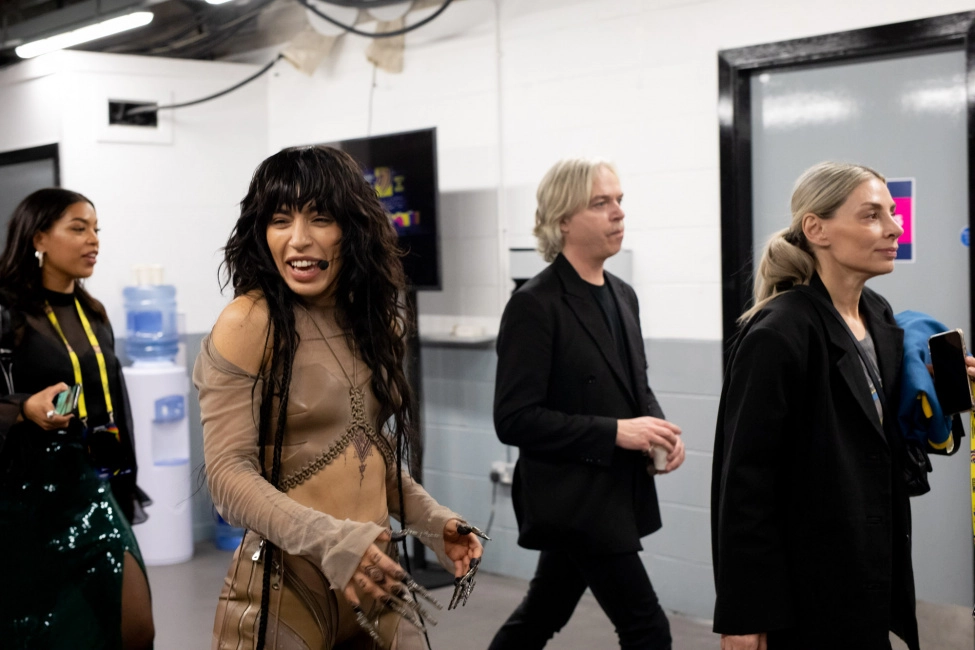
Photo: Chloe Hashemi
This year’s contest slogan is “United By Music.” From the rehearsals, you guys have done just that, and the production embodies that completely. What does that slogan mean to you?
JH: It sounds very cliché, but it couldn’t be more correct – especially in Liverpool, where there’s such an historically rich music aspect. It is a competition, and the heroes of the show are our musical artists, and we are here to celebrate their voices. It’s incredible that all these countries – especially in today’s times – are coming together to embrace this cultural event through their voice, through music.
READ MORE: ‘We have a bag of ideas that are arena-ready’ | How to curate the ultimate FLO experience
TR: For me, the number one priority for me was that unity meant diversity. When I first took the show on, my number one sell to the BBC was that I wanted this to be the most diverse technical team, in my department at least. I’ve got 50% female lighting technicians across the 24 technicians in the crew.
I wanted representation, so we sought out people across the whole team to ensure that people looking that might wish to get into our industry and be part of Eurovision in the future can feel represented within our teams. They can look at us and say, “I could do this in the future.” That has been a huge part of everything we’ve done within the lighting department.
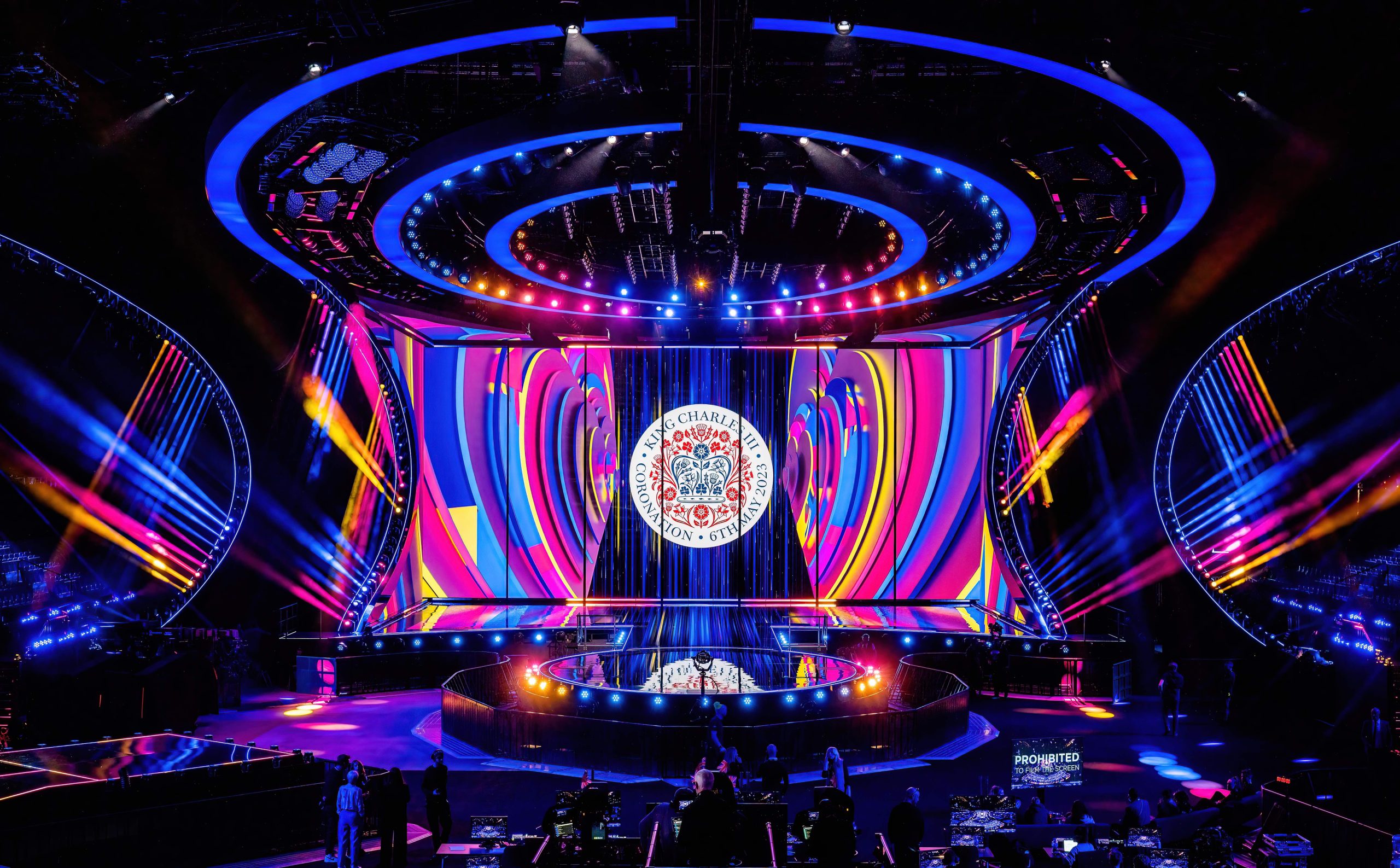
Do you have a favourite staging setup from the years gone by?
JH: I think the most recent one I have to say is Måneskin. They brought so much to the stage and since then they’ve become incredibly well-known across the world. It’s really exciting to see that a platform like Eurovision can be taken to that level. Netta in 2018 was a super fun performance, and Conchita in 2014 was one of my favourites, as was Dana International 25 years ago.
TR: I really hark back to Bucks Fizz in 1981. There was no staging back then. That costume reveal is now legendary and it was such a simple thing. I sent Julio a link to one of the contests hosted in the ‘70s from Edinburgh. There were people in the audience smoking, the scoreboards were flip charts the delegations had, the set was beige with a little bit of glitter draped behind.
You look back and watch the show that’s developed from the 1950s and that’s now stronger than it’s ever been before. No other brand has done that as an event. It’s the polar opposite [of our work], but it’s shown that things have progressed to this huge spectacle. It’s a platform for music that’s only going to get bigger over the coming years.

